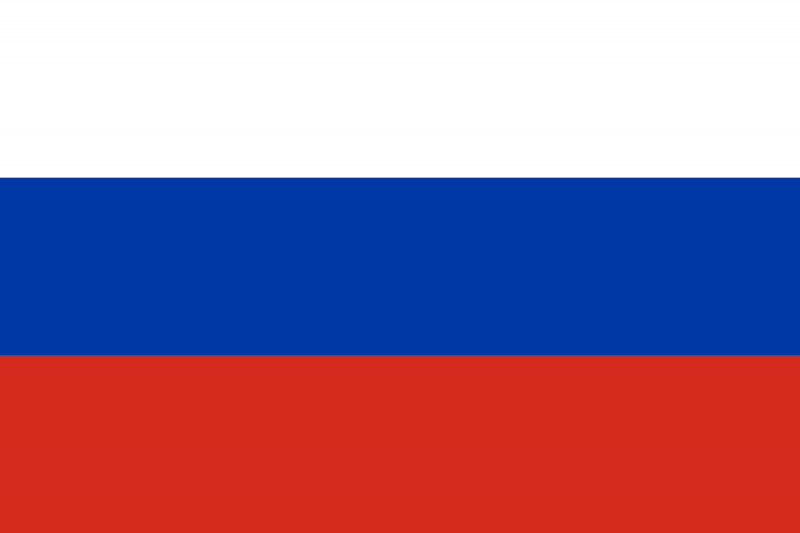History of the Russian flag
If you are interested in Russian history, you are most likely familiar with one of the symbols of Russia – the Russian “tricolor” – a rectangular flag of white, blue and red colors. However, the Russian flag did not always look this way, and since the day it was raised for the first time, it has changed its appearance and colors several times, reflecting stages of development and changes taking place in Russian state.
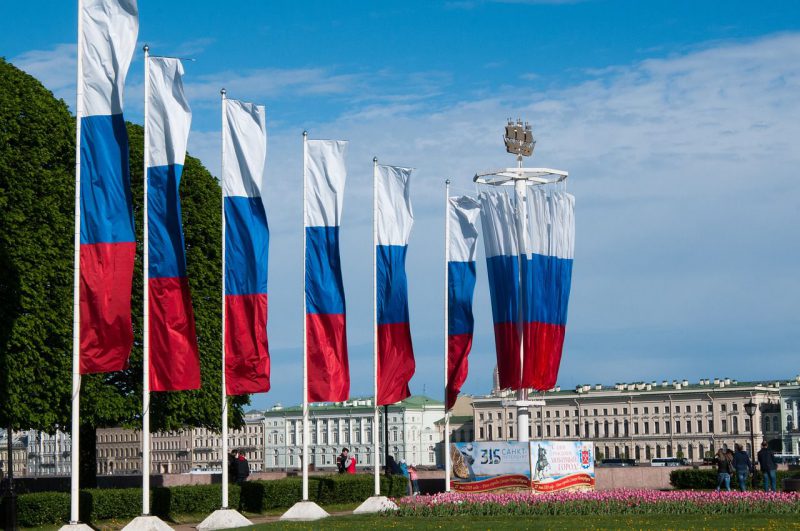
First flag of Russia
It is believed that until the 17th century, there was no official state flag in Russia. The first mention of it is associated with Tsar Alexei Mikhailovich Romanov (the second tsar from the Romanov dynasty). In 1668, following the European tradition, he ordered to raise the flag over the first Russian warship named “Eagle” (Орёл).
There is no exact information about what the first flag looked like, but it is known that red, white and blue fabrics were purchased for its production. According to one of the versions, a double-headed eagle was also depicted on the flag.
25 years later, in 1693, the son of Alexei I, Peter I (Peter the Great) used the “flag of the Tsar of Moscow” which consisted of three horizontal stripes (white, blue and red) while sailing on the White Sea. A golden two-headed eagle was in the center of the flag. It is considered that on that day the Russian fleet (and de facto the Russian state) got its official flag.
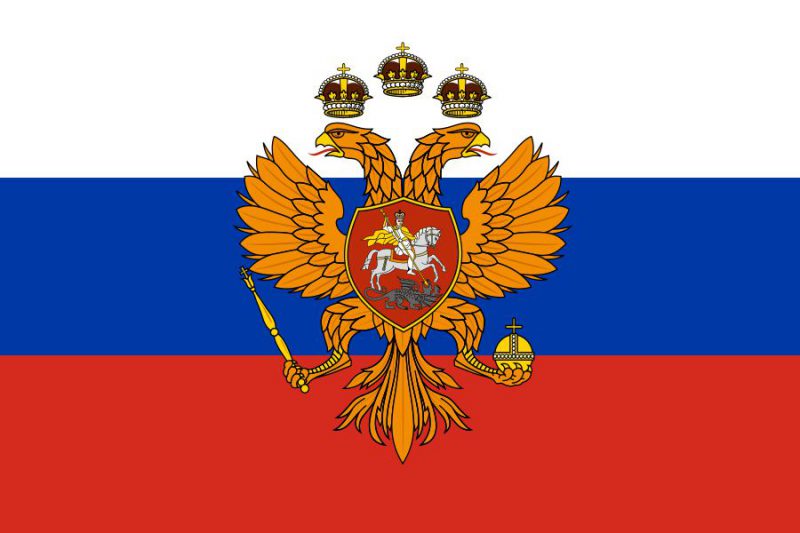
In 1705, Peter the Great ordered the flag be present on merchant ships as well. It was also used as the military field flag of the Russian army. White-blue-red scarves were part of the officer’s uniform of the early 18th century.
It is worth mentioning that in 1712, the navy began to use a white flag with an azure cross (St. Andrew’s flag), created in honor of the Order of the Holy Apostle Andrew the First-Called. The layout of the flag was created personally by Peter I.
Sudden changes: new flag of Russian Empire
The white-blue-red tricolor lasted virtually unchanged for the next 150 years. In 1858, Alexander II approved a new design of the flag for special occasions (black-yellow-white). The initiator of such unexpected changes was Baron von Koehne (who was coming from a Russian baronial family of German origin). He drew the emperor’s attention to the fact that the colors of the flag did not match to the colors of the coat of arms which contradicted the rules of German heraldry.
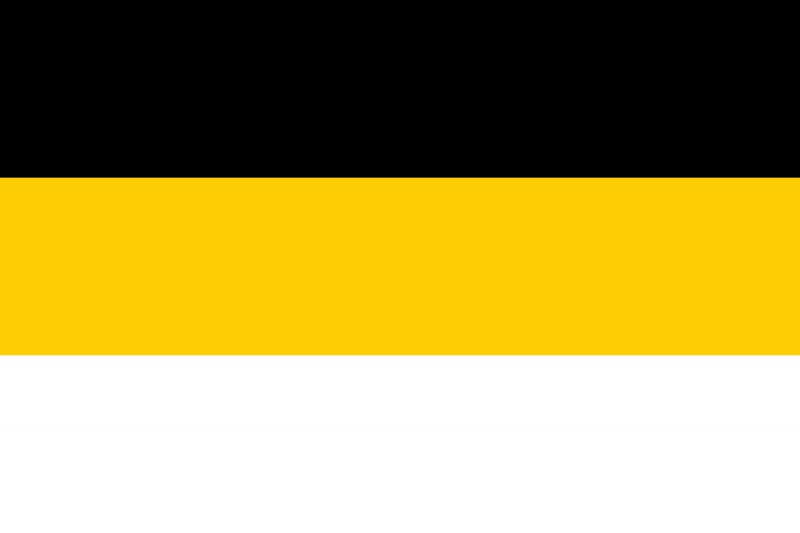
7 years later, in 1865, black, yellow and white colors were named the state colors of the Russian Empire. These colors symbolized earth (black), gold (yellow) and silver (white). However, the black-yellow-white flag was never popular in society due to strong associations with Austria and the house of the Habsburgs.
Temporary return
In 1883, during the celebration of his coronation, the new emperor of all Russia, Alexander III, noticed the contrast between the festive procession decorated with black-yellow-white flowers and cities that were dominated by white-blue-red colors. In the same year, the emperor ordered to use exclusively the white-blue-red flag on solemn occasions.
However, the status of the state flag was returned to the Petrovsky tricolor only in 1896, on the eve of the coronation of Nicholas II. The values of the chosen colors of the flag were also given: red for “statehood”, azure for the patronage of the God Mother, and white for freedom and independence.
New country, new symbols: communist Russia flag
Everything changed again in 1918, after the Bolsheviks came to power: the state flag of Russia changed its color to red with a gold inscription RSFSR in the upper left corner (RSFSR stands for Russian Soviet Federative Socialist Republic which was a part or Soviet Union that united a few republics). The idea of the red flag seems to have been borrowed from European revolutionaries and socialists.
But the final version of the RSFRS flag was approved only on May 2, 1954. Now the flag consisted of a red cloth with a light blue stripe at the pole along the entire width of the flag. On the red panel, in the upper left corner, were depicted a golden hammer and sickle, as well as a red five-pointed star, edged with gold, above them.
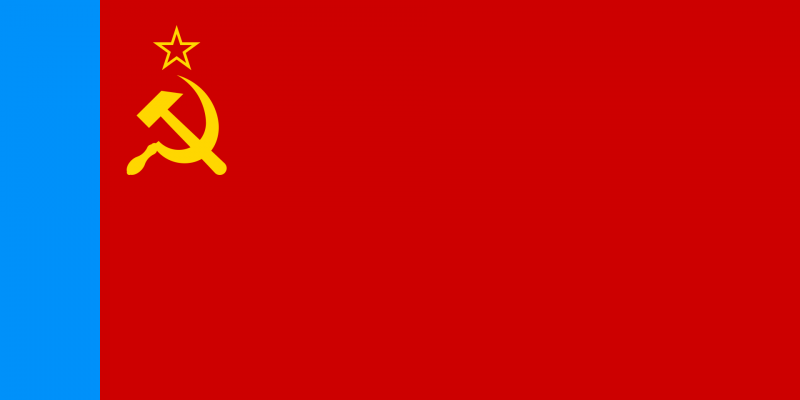
The flag that you might remeber, looking the same but without the blue stipe, was the flag of USSR.
Back to the history-tested origins: national Russian flag
In 1991, the Soviet Union ceased to exist, which means that a new flag was needed. It was decided to return to the history-tested white-blue-red version.
On December 11, 1993, Russian President Boris Yeltsin issued a decree “On the State Flag of the Russian Federation” which approved the colors and proportions of the flag in the form in which we have them now.
Since 1994, August 22 has been declared the Day of the State Flag of the Russian Federation.
